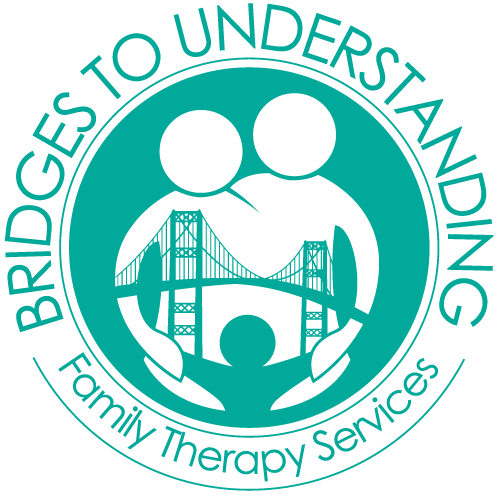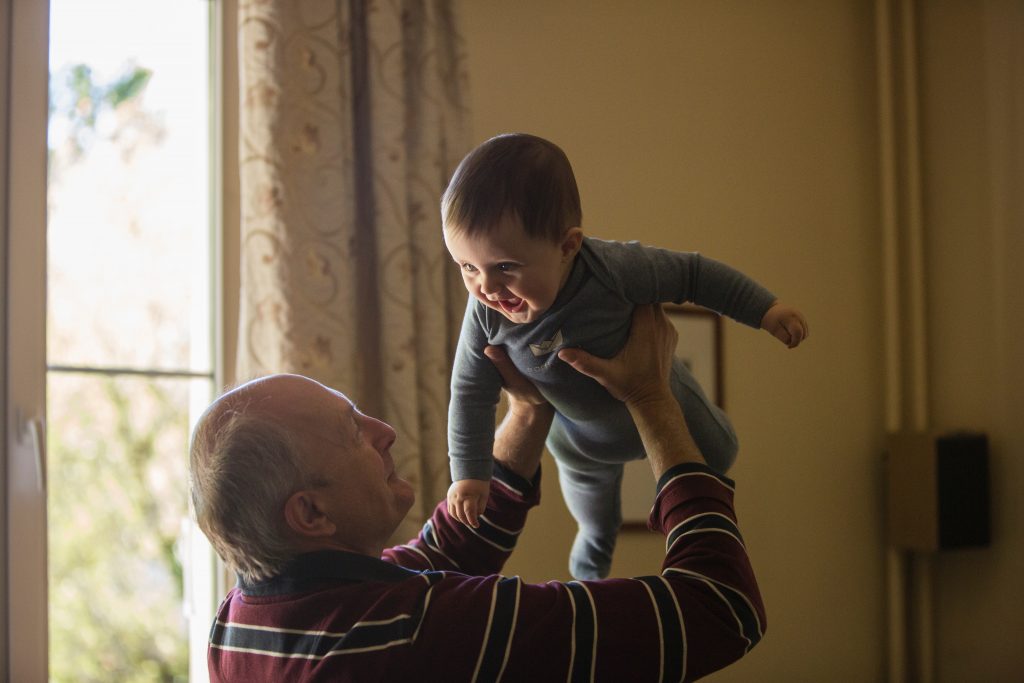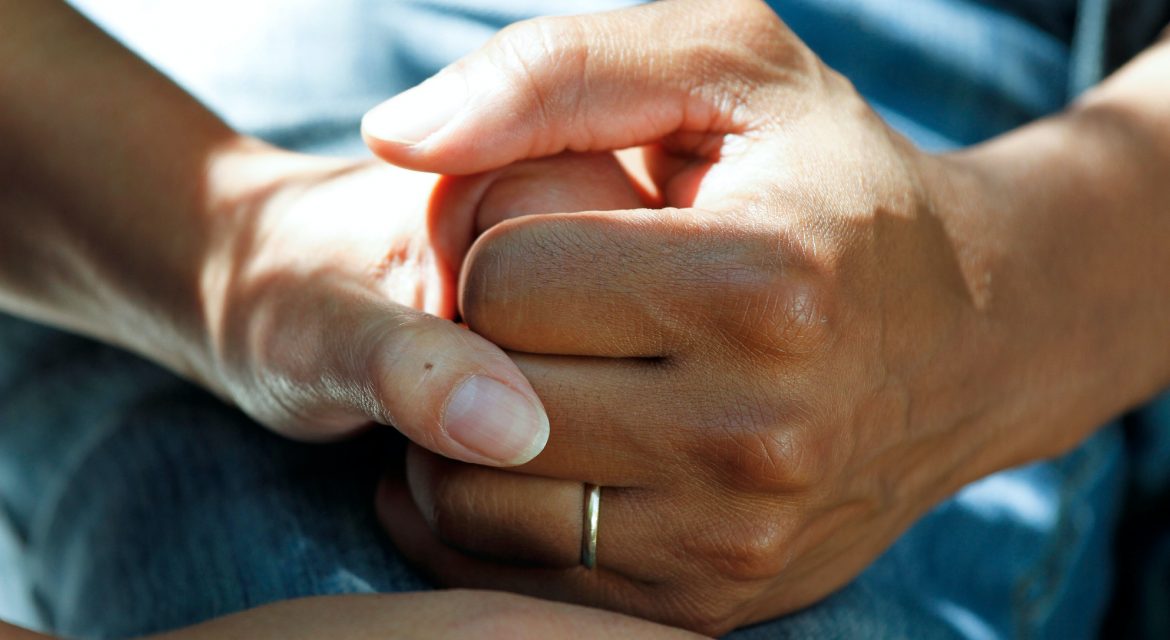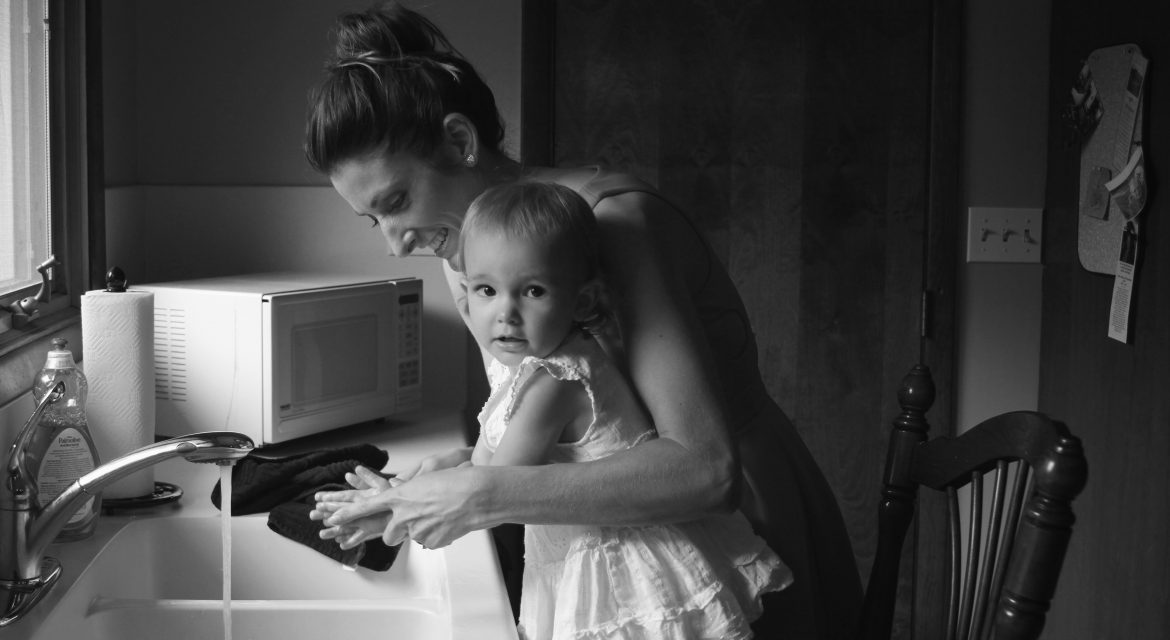
Spring is upon us, and with this comes a wave of positive emotions for me. I cannot verbally explain to you my experience, but I feel it in the deepest parts of me. In my formative years, I was primarily raised by my grandparents. They were farmers from Kansas, and moved to California to increase opportunity for our family. They never forgot their farmer roots, and with a small plot of land in Anaheim, they showed me how to tend a garden. With fruit trees, vegetable gardens, and flowers, my grandfather provided the fundamentals of sustaining annual crops. When spring arrives my core memories resurface, and I find a sense of comfort in the warmth of the soil, the sound of the birds chirping, and the taste of freshly picked fruit.
It is important to understand how memories work so you can create moments of connection with your own child. Children store memories differently when they are pre-verbal, and as they get older their later memories can be recalled, whereas their earlier memories cannot. This does not mean, however, that early childhood experiences are not important. Just the opposite, they are incredibly important for development. Children’s brains are becoming wired, they are learning everything around them through sensory experiences and attachment, and how they develop in these early years impacts their future in incredible ways.
With springtime upon us, it creates an opportunity to connect with your child outdoors. Exploration of an environment is important, and using sensory experiences helps children not only regulate, but also connect. Here are some ideas you may consider for spending time with your child:
Although these seem like simple suggestions, they facilitate bonding moments. Connection, along with sensory experiences, will create moments of joy that can be felt for a lifetime. As I plant my spring garden now, I can still feel the connection to my grandparents. This generational experience can live on through me, and continue for many lifetimes, as I invite my child to plant our garden together.

The Sandwich Generation…
What is this? Five years ago, I would have answered it sounded like a new option at our local deli. Now I understand intimately what this means. I am an older mama. The one who had a few heartbreaks before leaning into technology to deliver a beautiful bundle of joy. I suppose I am embracing the culture shift of women in the height of their careers paired with the love of being a mama. There are perks to this. As an older mama, I have the knowledge and wisdom of time on my side. I have stable income, I have flexibility in my career to allow for more freedom and work-life balance, and I am not the 20’s version of myself working full-time at the local coffee shop, interning to accumulate the 3,000 internship hours required prior to completing two state licensing exams while also completing grad school. Well, I suppose I’m not the 30’s version of myself also, building my career, traveling, and establishing myself in both my practice as well as in my community.
As an older mama, I have come head-to-head with the beast of The Sandwich Generation. Full disclosure (as if I haven’t said enough already), my mom has Dementia. She received her Early-Onset Dementia diagnosis just prior to the onset of COVID. I think most of us can point to an aunt, or maybe even grandma or grandpa, who calls us four or five names before landing correctly on our own. We hear the same stories over and over, but they tell us with such excitement it’s almost like they’re telling it for the first time. Well this began long ago for my mom, and after much testing and many doctors, we were given an additional diagnosis of Primary Progressive Aphasia. COVID stripped so many years of life away from her, not only with the naturally progressive impact of Dementia on someone, but also the complexities of isolation and fear of illness living with an immunocompromised husband (my father) who was battling cancer.
The Sandwich Generation: “…A group of middle-aged adults who care for both their aging parents and their own children… Taking care of an elderly parent while caring for your own children is a very time-consuming task. It can really affect your personal time; you are no longer able to do the things that you like to do, relax, sleep, etc. When all of these tasks start consuming your life, you become at risk for mental health problems. Depression and anxiety are a huge risk factor for the Sandwich Generation, [and] are typically at risk for loss of career development. They might be at the peak of their career and have to take a step down and lose their opportunity to be able to help care for their aging parent or growing children.”
Excerpt taken from Wikipedia, originally sourced by: Bowen, C. & Riley, L. (2005). The sandwich generation: challenges and coping strategies of multigenerational families.
The Family Journal, 13 (1), 52-58.
Why is this relevant? Generation X and Millennial generations encompass the largest living adult populations as we stand today. Therefore, if this topic has not become relevant yet, it will very possibly become relevant soon. Speaking for myself, being an “older” mama has allowed for financial freedoms and relevant growth, but is now weighed with the conundrum of how to balance a little dependent one with an aging and dependent parent (or parents). If your family is anything like my own, you will very soon be met with the possibility of embracing the multi-generational household. With this, I wonder how the societal shift will play out in our (U.S. driven) value systems of independence, autonomy, and separation. In our biracial household, we have easily navigated the invitation to bring our parents to live in our home and all live under one roof. Abuela comes to visit with us for multiple months at a time as well (and then all the grandparents are with us), and our aligned values have allowed a smooth process for this to take place. However, the writing is on the wall that this will quickly become a massive family stressor for many of us Sandwich Generationers. As indicated above, these stressors can quickly slide into mental health struggles such as anxiety and depression, and therefore an important consideration as we navigate the ever-changing phases of life.
Open communication, a deep look at our personal value systems, and proper planning will assist in navigation of The Sandwich Generation. Here are some initial questions you may want to ask yourself:
There are no easy answers to these life experiences. Only a reminder that these delicate situations are very difficult, and to be gentle with yourself and only take on what you feel confident you can handle. As for myself, I am finding comfort in community and comradery. I am actively processing the grief and loss of my mother as I have lost her spirit in the all-engulfing Dementia. I love hearing my son laughing as he plays with his grandparents, and I feel honored to be able to care for my parents during this time of their lives.

There’s a substance called iron pyrite that is known as fool’s gold. It’s an iron sulfide that features a ‘metallic luster’ and a ‘pale brass-yellow hue’ (wikipedia), and it’s these features which caused many prospectors to confuse pyrite with gold. So just take moment to imagine yourself as a gold miner. Imagine working day after day in the hot sun and the cold rain, and imagine the elation when you find a bright, shiny nugget. You think, ‘Hallelujah, my work is done!’ And then imagine the heartbreak when you find that this beautiful nugget is not gold, but a much less valuable substance, called pyrite. What heartbreak!
Now imagine you are not in the California Hills, or even in the Alaskan wilderness, but in a cozy therapy office. Will you know what is gold and what is pyrite? As a therapist, I can offer some guidance on what appears bright and shiny upon discovery, but grows dull and useless as time goes by.
Intellectual Understanding
I would describe intellectual understanding as grounded in logic and substantially different from emotional understanding. Intellectual understanding lives in the head and doesn’t have any emotional resonance. Do you feel emotional when you calculate 2 + 2 or 3 x 3? This is what I mean, it lives in your head. It doesn’t reach into your heart. Intellectual understanding is important, definitely, but it’s limited. It’s the first step, but it’s often where clients stop looking. What I’m searching for in therapy is a deeper and more vibrant understanding. I’m looking for a knowing that starts at the head but sinks all the way down into your body, into your bones.
I cannot tell you how many times a client has understood a new concept intellectually only to stop there. Intellectual understanding is a common plateau, and it does provide relief; however, the relief is only topical and feels much like putting a bit of aloe onto sunburn. There’s some relief but it’s short-lived. The burn still lies underneath. For example, one client understands intellectually the importance and value of self-compassion. I’ve successfully convinced her the value of showing herself as much compassion and love as she shows everyone else. However, we are stuck. Plateau’d on the plane of intellectual understanding. The client’s comprehension of self-compassion is only head-deep. It hasn’t sunk any deeper and her heart remains unchanged. (If you’re in a similar position as the client described above please check out the references below).
Another client understands that his brother’s addiction is not his fault. He also understands that it’s not his job to counterbalance the chaos his brother brings into the family by being the ‘perfect child’. However, this understanding is superficial. He understands it’s impossible to be perfect, but he is still compelled to try, over and over. The rational principle where it’s normal to be flawed and make mistakes only lives in his mind. He understands all of this because he’s smart and logical, but in deeper and truer sense, he does not understand.
The Reason
Another shiny nugget whose lustre often distracts clients is the illusive Reason (reason with a capital R!). The all-important Reason is believed to explain all of the pressing questions that brings a client into therapy, such as, ‘Why do I get so angry with my kids?’, or ‘Why can’t I trust my partner?’, and also, ‘Why do I freeze when my boss asks me a question?’ The Reason is very enticing. Clients, and even therapists ourselves, often think it will solve these difficult questions. I’m here to tell you its often more likely pyrite than gold.
Most commonly, we think Reason will be found in the distant past. Clients spend time in therapy recounting childhood memories such as sibling rivalries or playground interactions. Revisiting the origin is an important part of therapy. Indeed, exploring the past can be a great way to discover underlying patterns and family dynamics. We waste our time however when we dig and dig to find Reason, but cannot connect it to our current experiences and habits, which is the real gold in therapy.
Also, assuming one actually finds the Reason, it feels a little like the dog that caught the car. What the heck are you supposed to do with it? What happens next? Clients often envision that finding the Reason will be an experience akin to discovering gold. Eureka! Everything makes sense! All my problems are gone! But that rarely happens. Your shiny new insight is flat and dull when compared to the anger you feel towards your kids or the anxiety you feel at the company meeting. But how do we heal? Uncovering the origin is the first step. Then we find how we made meaning of the event. We are further helped to realize that the meaning-making caused us harm. The real gold happens when we can instill a different outlook of the event, and our therapist will help guide us to the bigger picture. Then we heal, reconnect in the here-and-now, and create new meaning.
Have you been searching for answers? Are you stuck in the cycle of logic? Have you uncovered some truths about yourself but don’t know what to do next? At Bridges to Understanding Family Therapy Services, we are here to help you heal and grow. You don’t have to do it alone. Located in Healdsburg, California, we offer in-person and virtual services to meet and join you on your path. Give us a call, shoot us a text, send us an email, heck even write us a letter. We will get it and find treatment options that work for you. We are offering same or next-week appointments, and we have evening availability. Don’t get fooled with pyrite, come find the real gold.
References:
Fool’s Gold: https://en.wikipedia.org/wiki/Pyrite
Kristin Neff: https://self-compassion.org/
Sharon Salzburg: https://www.sharonsalzberg.com/lovingkindness/
Content drafted by Diana Northness, concept changes and editing by Christy Livingston.

Let’s face it: offering comfort to our friends and loved ones during a crisis is difficult. Many of us feel tongue-tied and overwhelmed. We may feel insecure and worried about making a mistake or saying something that comes across as insensitive. We may even be impacted by the crisis ourselves and therefore have less presence to offer our friends. In these stressful times, we often reach for something ‘safe’, such as “It will get better with time”, or “Just stay positive”. These phrases (and those listed below) are offered by caring individuals with the best of intentions. They are offered in an effort to provide comfort and reassurance, and they often do. However, they describe only a part of the healing process, and there is some danger that they can be misleading. Words shape our perception of reality and so imprecise phrases contribute to our collective myths around coping and healing.
Healing is a complex process. It’s not simple, and it’s not always linear. It takes effort and emotional intelligence to survive and thrive after a crisis. I’ve listed 3 phrases below and we’ve all probably heard at least one, or perhaps we’ve said them ourselves when trying to comfort a friend. This purpose of this post is not to criticize those heartfelt efforts to comfort, but to expand our conversations around healing to bring a more complete understanding that it is a complex process. We will explore the phrases and I’ll offer an alternative or two as well.
‘Time will heal’
As a therapist, this is one of my least favorite maxims. My ears always perk up when I hear a client say this or something similar such as, “I just need some time”, or “I’ll feel better in time”.
I know the core truth being expressed is that time exerts a calming effect on raw nerves right after a crisis. For example, the moment you’ve been wronged, anger is intense and cortisol is coursing through your body. You may feel reactive, and this can be a bad time to make decisions. It is often better to let these intense emotions recede before taking action. Time helps take the sting out of emotional pain and I’m not arguing with that. I am arguing with the implication that time is all that’s needed for healing to occur. Saying “It will get better with time” is incomplete and misleading because it implies that time passing is the only thing that is necessary for improvement and healing. This is dangerous because it lulls us into thinking we can be passive. Unfortunately, healing is a very energy-intensive process and it often needs our active participation in order to come to fruition. Can you think of someone who only grew more bitter towards a situation as time went on? Time is helpful, but it’s not the only ingredient in healing.
Possible alternatives to offer yourself or others; “Things will get easier”, or “Give it some time”, or even “You have permission to take things slowly right now”.
‘You’ll get through this’
I love this phrase and those who offer it. They are trying to offer empowerment and confidence, and who doesn’t need a little boost of that now and then? However, the problem with this phrase is the emphasis ‘You’. It’s saying you as an individual will get through this time. That can focus a lot of pressure on the individual to navigate his/her healing as a solo adventure. Perhaps a more useful phrase would be, ‘We’re here for you to help you get through this’.
The second problem with this statement is a little more subtle. It implies that ‘You’as you are now will get through this difficult time. But life brings us challenges in order to change us. The person you were before this challenging experience may not be (and perhaps should not be) the same person who emerges on the other side of it. What is the purpose of life if not to break us open and invite us to change and improve? I always think of Leonard Cohen’s lyric, “There’s a crack in everything, that’s how the light gets in.”
Possible alternatives to offer yourself or others: “You’re going through a lot; I’m here to help you get to the other side.” “How has this experience changed you?” “What has this brought into your life, and what has this taken away?”
‘Stay positive’ (and all variations thereof, such as ‘Manifest good things’)
As with the first two phrases, I understand the desire to offer this guidance. I know the basic message here is to be mindful of your thoughts and to avoid getting stuck in negativity. I do not disagree with this guidance; negative thoughts are very sticky – and they can create their own gravity in keeping you down. So to be clear, I am all for the power of mindfulness, visualization, and practicing gratitude. However, as a therapist, I am wary when I hear that a client is selectively acknowledging only ‘positive’ emotions, such as happiness, and that he/she is conspicuously avoiding ‘negative’ emotions, such as anger or disappointment.
It is risky to repress emotions for two reasons. For one, emotions are physiological events. They occur in the body in the form of neurotransmitters such as dopamine, GABA, adrenaline, etc, and if you do not express that energy, it will come out sideways. Maybe not today or tomorrow, but eventually these emotions demand to be acknowledged. Second, it is counterproductive. To borrow from Brené Brown, “You cannot selectively numb emotions” (Brené Brown, The Power of Vulnerability: Teachings of Authenticity, Connections and Courage). Therefore, if your goal is to feel happy, you will have to also remain open to all other emotions. If you try to numb distressing emotions such as sadness or anger, you’ll notice your joy and happiness are drained and numbed as well. So to only focus on the negative will be like taking one step forward only to take two steps back.
Possible alternatives to offer yourself or others: “What has been easy and what has been difficult lately?” “What is making you angry/sad, and what are you grateful for in all this?”
Here is my final thought: The re-phrasings above are offered to help guide conversation and take personal reflections to a deeper level. I hope that you may find use in these alternatives as you consider the intention versus the outcome, and may help yourself or another find a deeper understanding of the situation to allow for greater healing.
~ Diana Northness, AMFT

I see you out there… Mamas who are working tirelessly to finish the school year strong for your children. Spending nights using your own time that should be dedicated to self-care filled with researching what in the world the “new way” of doing math is these days. I see you out there… Papas who are furloughed, trying to figure out a new purpose during these dire times. I see you out there… Professionals who have been working from home, kicking out your kiddos from your modified office/bedroom when all you want to do is hug them and close down the computer. I see you out there… Medical professionals working tirelessly, OT shifts to cover ill colleagues, trying to watch out for your vulnerable population of other staff who have chronic illnesses who you cannot protect as they venture out to the front lines. I see you out there… Teachers who have a burning desire to inspire youth but are met with fried children just dying to see their friends but can’t, trying to escape with video games, and not turning in work because they don’t feel there is reason for it. I see you out there… High School graduates packing up your prom dress that was never used, missing out on Senior Ditch day, Senior picnics, never being able to commemorate this time even with a simple Senior picture. Going “off” to college with online classes and studying from the same room you grew up in, when you should be moving into a dorm and having the perfect college experience. I see you out there… Infants and toddlers who just don’t understand why you cannot play with your friend, why people are covering half their faces which you base the emotive features on the content of what’s happening, why Grandma and Grandpa are only on screens now. I see myself… A mental health professional wondering about the gravity of what is happening right now in this moment and the implications of what this will do to our society for years to come. Wondering how a lack of social contact will impact developmental milestones. Wondering when the frontline workers will be able to pause and grieve. Wondering when the weight of this all will just become too overwhelming.
Just remember… It is ok, and expected, to grieve the society that once was. To fear the future. To not be able to live mindfully in the present moment, because you do not want to acknowledge or check in on how you are feeling about what’s going on.
I wake up each morning and go out to my garden, water my plants which are flourishing from my desire to implement routine in my home (for at least some sense of control) and therefore get watered every day at 7 am. (Insert gardening passion project at the onset of this whole thing to keep myself occupied so I wouldn’t be scared for all of my vulnerable friends and family). I spend ten minutes or so just sitting in the grass, listening to the birds, feeling the wind blow against me, grounding myself for the day to come. Then I come back inside, drink a massive cup of coffee, hop on my computer and get to it.
~Christy Livingston, LMFT

Coronavirus… People are polarized in two separate camps of “We’ve got canned goods for the next six months and enough toilet paper to get us through summer” or “I’m buying tickets to Hawaii and boarding an empty plane”. However, the formation of new habits in our current state of affairs has the potential for a longer lasting impact in future societal norms. What exactly will social distancing create? And what has this unearthed?
I was watching a video of an Italian street completely emptied, as mandatory countrywide quarantine had been implemented. In the video, the people of this town sang harmoniously with one another from their homes. Impromptu music has become viral throughout the area, with people playing musical instruments to their neighbors or randomly bursting out in song, and expressing a hope to one day soon become able to hug one another again.
What strikes me is the humanity of it all. The feeling of hope during dire times, the desire to connect even when we cannot physically be together. It gives me all the feels. As we are hunkering down and planning for catastrophe, I am inspired by others to keep the connection.
In my field of work, connection and relationships are at the core of it all. I have been reflecting on the implementation of social distancing, and problem solving how to continue to be supportive of my clients and people who continue to reach out for help. I always offer telehealth services (basically Facetime or Skype but with a therapy-lingo name and on a HIPPA compliant platform so everything stays uber confidential) when necessary, for situations such as a teen who goes away for college but needs ongoing support while away from home, or a jetsetter who travels often for work and cannot commit to a weekly time to be present physically in the therapy room. I realized quickly that this service needs to be offered to everyone in this time of need. So whether you are my weekly client, or you are wanting to reach out for help but do not feel comfortable leaving your home during this pandemic, I encourage you to still reach out. I promise you that if you seek connection during this time of mandatory seclusion, my staff and I will be here for you.
I realize that what has been unearthed during this whole affair is an overwhelming desire to connect with one another. It’s funny how we seem to take this for granted- just look around a restaurant on a Friday night to see how many people are staring at their phones in front of their company. Technology habits have overtaken the family dinner table. As schools are closing and mandatory quarantine just may become a reality for us as it is in other parts of the world, I am finding a sense of peace with it all. Time to slow down, time to enjoy family, time to pull out art supplies and board games. Time to burst out in impromptu song.
~ Christy Livingston, LMFT